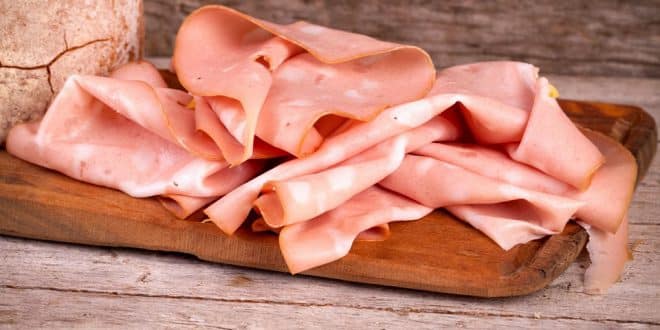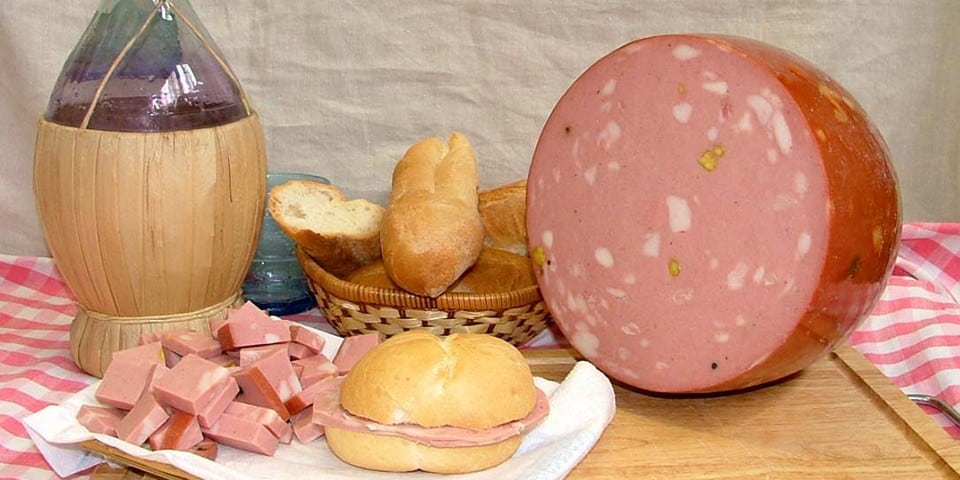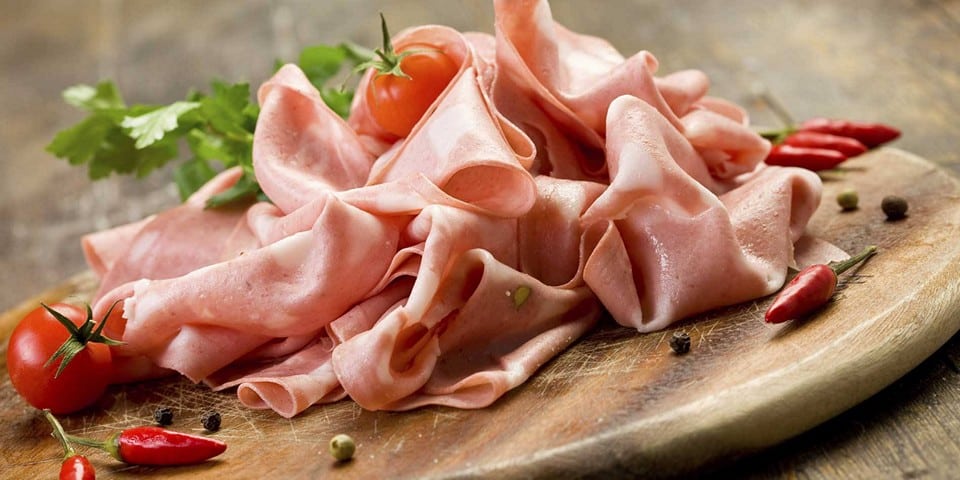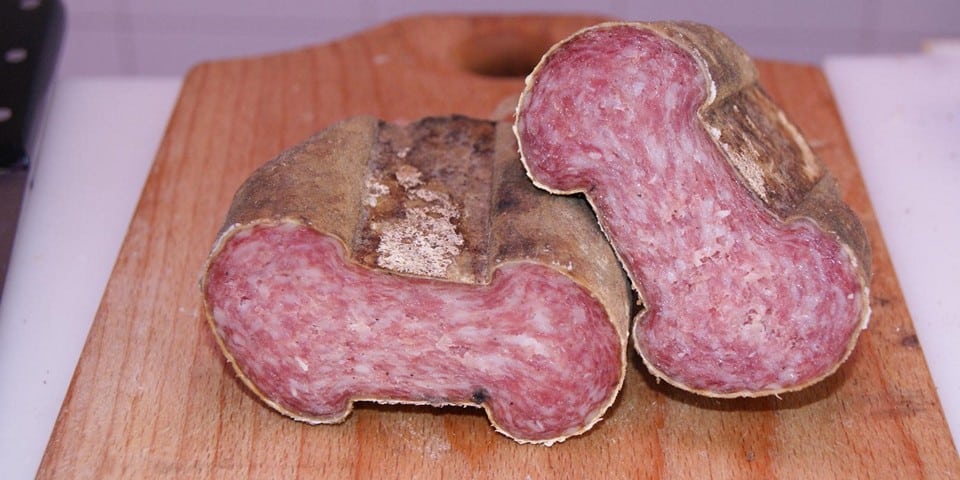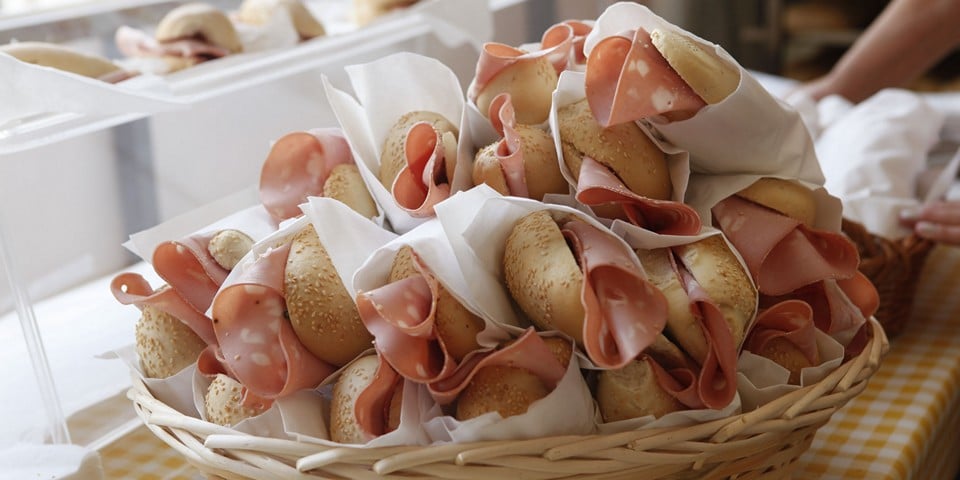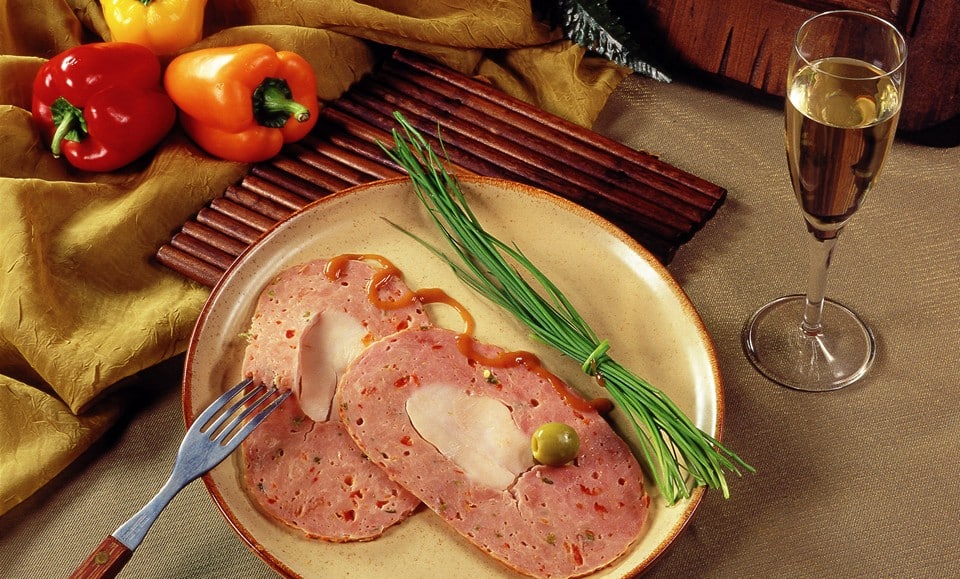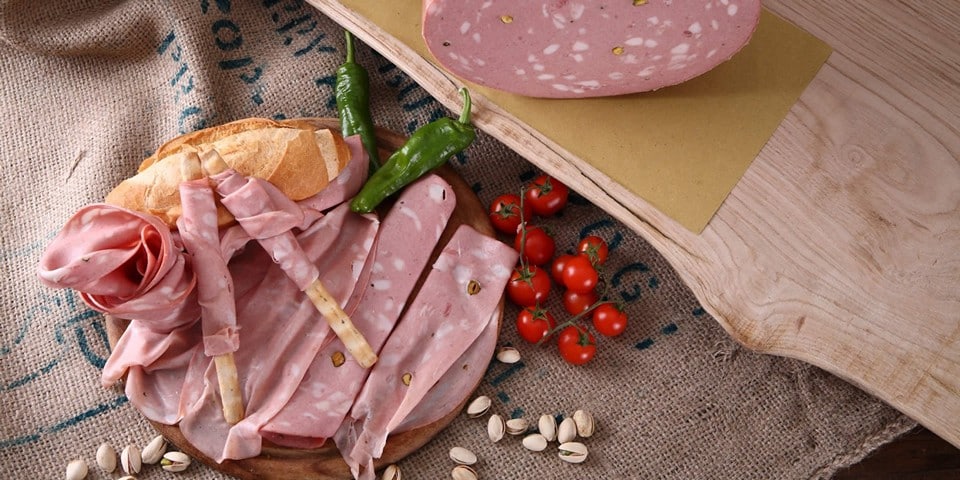Today, boiled sausage no longer surprises anyone. It has long transitioned from the realm of delicacies to the ranks of everyday products. However, while domestic consumers increasingly associate industrial sausage products with toilet paper, Italians proudly speak of their Mortadella with their heads held high. Born in Bologna, it has become a symbol of the city and a benchmark for the quality of meat products. Mortadella Bologna is a well-deserved holder of the IGP (Protected Geographical Indication) category.
Page Contents
What You Need to Know about Mortadella
Where is Mortadella from?
What does Mortadella taste like?
Is Mortadella good for weight loss?
How much protein is in Mortadella?
Can you freeze Mortadella?
History
It is believed that Mortadella was first born in the 1st century in the area between the regions of Emilia-Romagna and Lazio. However, over time, this meat product vanished and re-emerged only in the 16th century in the city of Bologna.
The Bologna City Archaeological Museum preserves the first evidence of sausage production, dating back to the Roman Empire period: an image of grazing pigs and a mortar and pestle used to initially grind the meat for sausage.
The origin of the term “Mortadella” is not definitively determined. Some historians connect it with the Latin word “myrtatum,” which means myrtle (a spice used for preparing meat products even before our era). According to another hypothesis, the name of the sausage derives from the ancient meat grinding device called a “mortar.” A third version relates to the consistency of the product and claims that Mortadella is linked to the word “murtarum” (finely minced meat).
In the Middle Ages, Mortadella was a very expensive product due to the use of a large quantity of spices, which were costly at that time, to help preserve it longer.
The price of the sausage was nine times higher than that of bread, three times higher than ham, and twice as high as olive oil. Interestingly, Mortadella even served as one of the gifts at the wedding of Lucrezia Borgia and Alfonso I.
In 1661, Cardinal Farnese enacted a law to protect Mortadella from counterfeits. However, it was only in the 1800s, with the advent of mechanized meat production, that the product became accessible to the general population. In 1876, the Salsamentari organization was established, whose members strictly monitored the adherence to traditional sausage-making techniques. Thanks to them, Mortadella became the protagonist of the industrial revolution. Nowadays, the quality of Mortadella Bologna and Mortadella di Prato is protected by the IGP (Protected Geographical Indication) category.
As a tribute to their traditional product, the city of Zola Predosa hosts an international festival dedicated to Mortadella called “Mortadella, please.”
Composition and Technology
To make the right choice when selecting a product, it is essential to know for certain that its quality is regulated by law. A prime example of this is Mortadella Bologna. The sausage is so strongly associated with its homeland that both in Italy and beyond, it is simply called “Bologna.”
Mortadella consists of a mixture of meat, pork fat, salt, and pepper. The casing can be natural or synthetic. The law permits the use of pistachios, sugar (up to 0.5% of the product’s weight), sodium or potassium nitrates, ascorbic acid, and monosodium glutamate. While the use of monosodium glutamate sparks intense debate, nitrates are driven by consumer preferences. A “pure” meat product has a pinkish-gray color and darkens over time, which is not popular among buyers.
The meat is separated from the skin and fat to make the sausage and minced to a paste-like consistency. The fat is diced into small cubes and mixed with the minced meat, salt, and pepper. The resulting mixture is then filled into the casing and sent to ovens with dry air. The cooking time depends on the size of the product and ranges from a few hours to several days, but in any case, the temperature at the center of the product should reach 70 degrees Celsius (158 degrees Fahrenheit). After cooking, the sausage is cooled to at least 10 degrees Celsius (50 degrees Fahrenheit).
The finished Mortadella has an oval or cylindrical shape. It has a compact, non-elastic texture. The cut surface is pink and velvety, with visible pearly-white fat inclusions (around 15%), evenly distributed within the meat. The aroma is intense and meaty, and the taste is delicate, without smoky undertones.
On the counters, you can find whole sausage batons sold by weight, as well as pre-sliced pieces in vacuum packaging. The latter option meets the convenience and speed requirements of modern consumers
Interestingly, not all varieties of Mortadella are prepared in the same way. Some of them are not even boiled sausages and resemble Salami more (Mortadella della val d’Ossola, Mortadella di Amatrice, Mortadella di Camaiore, Mortadella di Campotosto). Another unusual meat product is Mortadella di fegato. It is made from raw liver, which is not subjected to thermal processing but undergoes curing for 4-5 months.
However, this product is usually made from a mixture of beef and pork and does not contain pieces of fat. Coriander and nutmeg are used as spices.
Recipe for Homemade Mortadella
Making sausages at home can be a fascinating process. It also allows you to save some money on purchasing ready-made products, especially when it comes to high-quality sausages. One of the most tempting options for a homemade delicacy is mortadella. The recipe requires minimal time, and the result is delightful in taste.
Ensure you have the following ingredients on hand:
- 10-14 oz (300-400 g) ground pork;
- A handful of shelled pistachios (optional);
- Salt and pepper to taste;
- Pig intestines (casings);
- Kitchen twine;
- Ice cubes.
Place the prepared ground pork in a large container and mix it with salt, pepper, and a portion of pistachios. Blend everything using an immersion blender until you achieve a smooth, paste-like consistency. Then, add the remaining pistachios and mix well. Fill the cleaned pig intestines with the mixture using a meat grinder or spoon.
Tie the ends of the intestines with kitchen twine and place them in an oven preheated to 80°C (176°F). The mortadella preparation process takes at least 6 hours. Once the time has passed, remove the sausage from the oven and immerse it in a basin filled with cold water and ice cubes for 3-4 minutes. This step stops the cooking process. Remove the mortadella from the water, dry it with a clean cloth, and transfer it to the refrigerator.
Recommendations
To achieve the perfect mortadella using this simple recipe, you can follow some additional easy recommendations:
- Choose high-quality meat to ensure excellent results. The fat content should be around 30%.
- If you don’t have kitchen twine on hand, you can sew the ends of the casing with a needle and thick thread.
- For those who prefer moister meat products, place a pan of water in the oven during the sausage cooking time.
- You can slightly modify the recipe’s ingredients according to your taste. For example, use white or red pepper instead of black, add garlic and other spices, or exclude pistachios.
Remember that storing the prepared mortadella for no longer than a week is preferable, unless you consume it earlier.
How to Enjoy Mortadella
Mortadella is highly versatile in terms of culinary preferences. It can be enjoyed on its own or used as a key ingredient in numerous recipes.
Traditionally, mortadella is sliced into thin rounds or small cubes and served with bread (such as rosetta or crescent rolls) or breadsticks. It pairs well with Parmesan cheese and a few drops of balsamic vinegar.
It can be used as a filling for tortellini, in ragus, sauces, pies, and salads. It adds flavor to soups, omelets, and meat rolls. Mortadella also pairs excellently with sparkling wines and champagne.
Caloric Content and Benefits
Mortadella is a less calorie-dense product than it may initially seem. In 100 g of the product, there are only 288 kcal, consisting of:
- Protein: 15.7 g
- Fat: 25.0 g
- Carbohydrates: 0 g
Despite its relatively low caloric content, mortadella has a considerable amount of fat and cholesterol (60-70 mg). Moreover, the distribution of fatty acids leans towards saturated fats. These aspects make mortadella less suitable for individuals with high cholesterol levels or excess weight.
The sausage is also rich in sodium, mainly present in table salt. Excessive sodium intake in the long term can lead to the development of hypertension.
The proteins in mortadella have high biological value. They primarily consist of glutamic and aspartic acids, leucine, and lysine. The latter two are essential amino acids that the human body can only obtain through food.
Mortadella is rich in minerals, particularly iron, phosphorus, and zinc. Therefore, it can be considered an ideal food for individuals engaged in physical activities and in need of “proper energy.” Vitamins B1, B2, and niacin are additional undeniable benefits of the product, as they directly regulate metabolism.
Based on the above, it can be concluded that mortadella consumption should be more systematic than constant. The average portion of sausage for a healthy individual leading an active lifestyle should not exceed 60-80 g. Athletes with heavy physical exertion are allowed to consume more mortadella in one meal.
Interesting Facts about Mortadella
- Mortadella, a beloved Italian sausage, traces its roots back to ancient Rome, where it was known as “myrtle sausage” due to the addition of myrtle berries.
- The traditional production of Mortadella involves finely grinding high-quality pork, mixing it with spices, such as black pepper and coriander, and stuffing it into casings.
- The city of Bologna in Italy is renowned for its Mortadella production and is often referred to as the “home of Mortadella.” The earliest written records of Mortadella date back to the 14th century.
- Its distinctive aroma and delicate flavor characterize Mortadella. It has a smooth and uniform texture with small pieces of pork fat evenly distributed throughout the sausage.
- To enhance the taste and quality of Mortadella, it is traditionally slow-cooked in large copper cauldrons or ovens. This slow cooking process helps to preserve the flavors and achieve the desired texture.
- Mortadella gained international fame when Italian immigrants introduced it to the United States in the late 19th century. It quickly became popular and has since become a staple in delis and charcuterie boards.
- Mortadella is often enjoyed thinly sliced as a cold cut or used as a key ingredient in sandwiches, antipasti platters, and pasta dishes. Its versatility makes it a favorite choice for many Italian recipes.
How Much does Mortadella Cost in Italy
The cost of mortadella in Italy directly depends on the variety and manufacturer. The most valuable mortadella from Bologna with the IGP quality mark can be purchased within the 12-25 euros per 1 kg range.
Now, having read this article, do you understand the significant differences between mortadella and domestic sausages? If yes, it is definitely worth planning a trip to Italy for a tasting of the aromatic “Bologna.” Live life to the fullest, hurry to love, take care of your loved ones, and remember: “You don’t go to Italy with your ‘Doktorskaya’ sausage!”
 Italy for me From Italy with love
Italy for me From Italy with love

